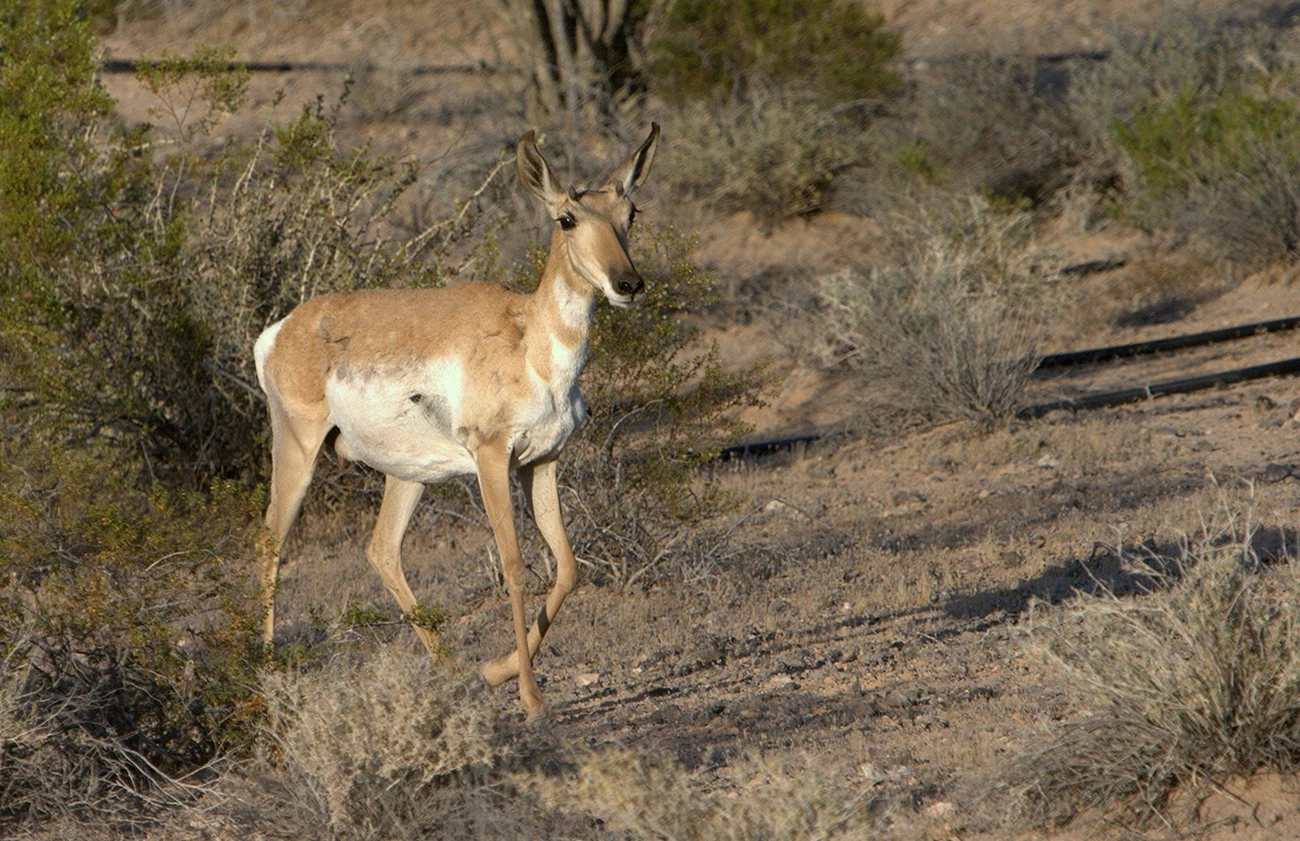
NPS photo
Hoofed animals are characterized in part by their feet, or more specifically, their toes. A hoof is made up of the same material as your fingernail, called keratin, and it covers the bony "fingertips" that these animals walk on. The wild, hoofed animals in the monument have many similarities, such as their unique methods of digesting food, or the way they form herds. Conversely, some of these animals are totally unique, such as the pronghorn, which is effectively the "last of its kind", with no closely related living species. Explore the unique hoofed animals you may encounter in the monument below.

NPS photo Desert bighorn sheep (Ovis canadensis nelsoni)Desert bighorn sheep are well adapted to, and well known through the desert southwest. Able to withstand extreme high and low temperatures, bighorn sheep pick along the hillsides and mountains in search of water and food. Their keen eyesight helps keep them spot predators, and their strength and grip allow them to quickly scale rocks to safety. Traveling in small herds give these animals safety in numbers and defense against coyotes and mountain lions. Identify this AnimalBighorn sheep are heavy bodied with large, broad heads and wideset eyes. Both sexed have horns, but only the males’ heavy horns will form the iconic curl. During the breeding season, rams will battle for dominance and mating rights by ramming horns, filling the mountain air with loud cracks. 
NPS photo Pronghorn (Antilocapra americana sonoriensis)Pronghorn are often referred to as antelope, though they are more closely related to giraffes. Additionally, pronghorn are unique to North America and have no immediate living relatives. Pronghorn have a reputation the fastest land animal of the Americas, maxing out at speeds of 60 mph (97kmph). Pronghorn are very skittish and will bolt at the sound or sight of danger. Pronghorn rarely jump and prefer to use speed to outrun danger, which makes fences a considerable barrier to herd movement. Identify this AnimalPronghorn may look like deer at first glance, but have orangish brown fur with bold white bellies, rumps, and neck markings. Both sexes have uniquely forked horns and a dark mask, though males’ masks are bolder, their horns are larger, and they also have a dark neck patch. Pronghorn form and reform herds throughout the year. 
NPS photo Javelina (Tayassu tajacu)Javelinas, also known as collared peccaries, look a bit like wild boars, but are only distantly related. Peccaries are native to the desert southwest of the United States down into South America, while pigs are native to Eurasia and North Africa. Javelinas use scent glands on their backs and cheeks to mark territories and to familiarize with members of their herd, giving them the nickname “musk hogs”. Though javelinas may be seen in the monument where they shelter in washes or the shade of a tree, it is far more common to spot them in urban settings, where they have adapted to find food from human neighbors. Identify this AnimalJavelinas are short with a rounded back, and is perched on thin, short legs. The hair is medium length, bristly, and dark gray in color. A line of white fur stretches from the shoulder to under the jaw, forming a “collar”. Javelinas have a “mohawk” of hair from the back of the head to the shoulders. Though rarely visible, javelinas have a set of long tusks, which they can use for defense, that sharpen as they chew. 
NPS photo Coues whitetail deer (Odocoileus virginianus couesi)Identify this Animal Coues (pronounced “cooz” or “cows”) whitetail deer are often spotted at higher elevations in the Ajo range. These deer move in small herds and communicate danger to each other by raising their fluffy white tail like a banner and bounding away. Their large ears contain many tiny blood vessels, which helps regulate body temperature when outside temperatures soar. Identify this AnimalCoues deer are considerably smaller than the local mule deer, appearing slender and almost dwarfed. Coues deer fur is a drab brown that blends in with the desert background. On the throat, around the nose, and under the tail, bright white fur stands out. Antlers of whitetail deer consist of a curved main column from which all other points branch off. 
NPS photo Mule deer (Odocoileus hemionus)Mule deer are the largest deer found in the monument. Their range overlaps with the Coues whitetail deer which are notably smaller. Mule deer occupy the lower lying flat lands, where nutrient dense trees and shrubs grow. The mating season or “rut” for the deer in the region is early to mid-winter. As a result, fawns are born after the dry, early summer and arrive just in time for the monsoon season when vegetation is plentiful. Identify this AnimalThe mule deer is a medium-sized deer, with a stocky build. Ears are large and help regulate body temperature, and males’ antlers continually fork. Mule deer fur is dusky brown, on the top and white on the throat, rump, and face. The tail is long and fluffy with a black tip. They can be seen moving in small herds, searching for water and plants to browse. Hoofed Mammals of Arizona |
Last updated: September 23, 2023
